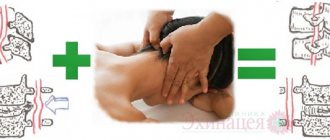What is increased intracranial pressure?
Inside the brain there is a system of interconnected ventricles, which are also filled with cerebrospinal fluid (CSF). This protects the human brain from injuries, concussions, as much as possible. The pressure of cerebrospinal fluid on brain structures is called intracranial pressure. Exceeding the permissible norms entails a number of consequences.
The main question for parents is what are the signs of intracranial pressure in a child, and what threat does this pose to the child?
What complications can there be in children? If left untreated, increased intracranial pressure can lead to the following consequences: the occurrence of epileptic syndrome, blurred vision, mental disorders, strokes, disorders of consciousness, breathing problems, weakness in the limbs, etc.
What should parents of a child with this diagnosis know? ICP is not a disease, but only a symptom, a consequence of various diseases. There are several misconceptions among parents regarding increased intracranial pressure. For example, the fact that this is an incurable condition. However, with timely treatment, the child’s recovery is possible. The main thing that needs to be done is to consult a specialist in time and follow the doctor’s instructions.
Osteopathic approach to the treatment of intracranial pressure in a child
Osteopathic methods in the treatment of arterial hypertension in children are successfully used in cases where high intracranial compression of brain structures is caused by impaired venous blood circulation.
During osteopathic treatment, three mechanisms are simultaneously activated to improve the outflow of blood from the cranial cavity:
- Restoring the patency of venous vessels at the points of their exit from the cranium and in the area of the neurovascular bundle;
- Impact on parts of the nervous autonomic system;
- Normalization of the suction functions of the chest.
Also, the use of these methods makes it possible to achieve effective results in the complex treatment of arterial hypertension in the absence of indications for surgical intervention. In this case, the osteopath uses manual techniques aimed at restoring the craniosacral rhythm.
The course of osteopathic treatment and the number of manual therapy sessions are determined by the doctor, taking into account how old the child is and what symptoms accompany the disease. The positive effect of osteopathy treatment is visible after just a few sessions.
To achieve stable and long-term results in the treatment of increased intracranial pressure, osteopathic techniques are recommended to be combined with other conservative methods (physiotherapy, therapeutic exercises, adherence to eating and drinking regimes).
Symptoms of increased intracranial pressure
Increased intracranial pressure in children, symptoms of which can appear in the first minutes and hours after birth, often leads to the development of serious complications.
When parents may suspect something is wrong:
In young children:
- The baby constantly cries and does not calm down;
- Lack of thirst in the child, reluctance to drink;
- The baby is irritated by bright lights and sharp sounds;
- The child burps frequently and profusely;
- The baby's fontanel bulges;
- The baby's chin is shaking;
- Rapid head growth (this is due to stagnation of venous blood);
- The child throws his head back.
In older children
- Severe headaches;
- Nausea, vomiting;
- Increased fatigue, weakness;
- Drowsiness;
- Tearfulness, irritability;
- Apathy;
- Double vision.
Knowing the key signs of the disease, you can establish the correct diagnosis in the early stages and prescribe the correct treatment for your child. Even if you have only one of the listed symptoms, you need to immediately contact a neurologist! The sooner your baby receives help, the fewer consequences it will have for the child’s body in the future.
general information
It happens that a completely healthy newborn baby begins to cry for no apparent reason, refuse to eat, have trouble falling asleep or sleep restlessly at night. Or older children complain of severe headaches , which may be accompanied by bouts of vomiting against the background of a general loss of strength. In such cases, doctors often diagnose increased intracranial pressure (hereinafter referred to as ICP).
What is ICP and what are its symptoms? What could be the causes and consequences of this ailment for a person’s health and well-being? We will answer this and many other questions on the topic in this material. But first, let's look at some general questions that relate to the physiology and structure of the human brain.
Diagnosis of intracranial pressure
Before prescribing treatment for your child, we perform a comprehensive neurological examination. It includes:
- Collecting anamnesis (conversation with the mother, studying the child’s medical record, history of pregnancy and childbirth and the results of previous studies);
- special neurological tests;
- active and muscle tests;
- reflex diagnostics;
- local palpation examination of the spine and musculoskeletal system.
In addition to the main examination, if necessary, the doctor may prescribe:
- NSG (neurosonography, ultrasound of the brain);
- MRI;
- Ultrasound;
- X-ray;
- Lab tests;
- EEG;
Treatment of intracranial pressure
To treat our little patients, we use only painless, gentle treatment methods that do not cause discomfort to the baby.
We use methods:
- Transcranial micropolarization (TCMP) is the effect of a low-power direct electric current (less than 1 mA) on brain tissue in order to activate individual brain centers (speech, motor, psychomotor, etc.);
- Manual therapy;
- Osteopathy - treatment by the hands of a doctor, a gentle effect on the musculoskeletal system, nervous and vascular systems, internal organs;
- Acupuncture - exposure to biologically active points with microneedles;
- Pharmacopuncture - the introduction of medicinal drugs of natural origin to the source of the problem;
- Isometric kinesiotherapy - individual gymnastic techniques/exercises, according to indications, with elements of joint massage;
- Isometric kinesiotherapy using the Exart installation;
- Ozone therapy - treatment with active oxygen;
- Physiotherapy;
- Physiotherapy with enzyme preparations;
- Medical massage;
- Therapeutic droppers;
- Hirudotherapy - treatment with leeches;
- Botulinum therapy - treatment with botulinum toxin;
- Tsubotherapy is a gentle effect on the reflex points of the body.
Remember that with increased intracranial pressure in children, treatment should be comprehensive, individual and under the supervision of a doctor.
Causes and consequences of intracranial hypertension
- congenital pathologies of the venous sinuses, cerebrospinal fluid ducts or hydrocephalus resulting from an unfavorable course of pregnancy or head injury;
- prolonged labor;
- umbilical cord entanglement;
- birth injuries;
- increased intracranial pressure during pregnancy in the mother;
- infections affecting the central nervous system ( encephalitis, meningitis, neurosyphilis );
- hematomas and neoplasms (malignant, benign, cysts , parasitic accumulations , abscesses );
- otitis;
- malaria;
- mastoiditis;
- bronchitis;
- gastroenteritis;
- diseases of the endocrine system ( obesity , hepatic encephalopathy , hyperthyroidism , adrenal insufficiency );
- cerebral edema resulting from trauma (TBI) , stroke or after surgery;
- taking medications (oral contraceptives , Biseptol , retinoids, tetracycline antibiotics, nitrofurans, corticosteroids).
Without timely treatment, intracranial hypertension leads to:
- partial or complete loss of vision;
- respiratory dysfunction;
- mental pathologies;
- pinched cerebellum;
- confusion;
- edema and death ;
- convulsive conditions;
- fainting;
- hemorrhagic or ischemic stroke ;
- coma.
Diseases caused by increased intracranial pressure
Our pediatric neurology department will help you not only make a correct diagnosis, but also undergo a course of treatment if your child has:
- Hyperactivity (attention deficit hyperactivity disorder, ADHD);
- Cerebral palsy (cerebral palsy);
- Autism;
- Delayed psychomotor development;
- Delayed speech development;
- Speech defects;
- Stuttering;
- Nervous tics;
- Enuresis;
- Sleep disturbances (sleeps poorly, sleeps little, wakes up frequently, does not fall asleep for a long time);
- Hypertonicity;
- Pyramid syndrome (pyramidal insufficiency syndrome);
- Hypertensive syndrome;
- Hydrocephalus (hydrocephalic syndrome, dropsy of the brain);
- Perinatal encephalopathy (perinatal damage to the central nervous system, PEP, PPCNS);
- Minimal brain dysfunction (MCD).
Causes of intracranial pressure:
- Birth or traumatic brain injury;
- Prematurity, pathologies during pregnancy or childbirth;
- Untimely fusion of the skull bones in a child;
- Benign brain tumors, which lead to increased blood pressure and changes in brain structures;
- Malignant brain tumors;
- Meningitis;
- Encephalitis;
- Toxic cerebral edema;
- Hydrocephalus;
- Genetic abnormalities and defects of the cerebrospinal fluid tract;
- Traumatic brain injury;
- Intracerebral hemorrhage.
Intracranial pressure in children under one year of age: how to determine and how to treat
Many mothers and fathers have heard the phrase “increased intracranial pressure”: Russian neurologists make this diagnosis for every 10th baby in the first year of life. And foreign experts believe that they are exaggerating; such an illness cannot occur so often. And who is right?
Intracranial pressure: an anatomy lesson
The brain produces cerebrospinal fluid (CSF), a liquid that first washes its structures and then flows into the spinal cord. If this process fails, the liquor is retained, accumulates and takes up additional volume, violating the boundaries of its “neighbors”. It becomes too crowded under the skull, which causes intracranial pressure to increase.
A change in indicators within the normal range due to external circumstances - increased atmospheric pressure, regime failure, colic, and so on - is not dangerous to the baby’s health. In this state, the baby will experience discomfort - excessive anxiety, slight sleep disturbance, loss of appetite. If he could talk, he would tell his mother about his poor health - headaches, nausea and other troubles. Even an adult during a strong cough can feel “shocks” of increased intracranial pressure.
As soon as the unfavorable conditions disappear, intracranial pressure returns to normal, and the baby’s behavior changes for the better without drugs or medical manipulation.
By leaving a note “increased intracranial pressure” or “threat of increased intracranial pressure” in the child’s medical record, Russian neurologists “signal” to their colleagues (pediatrician, ophthalmologist, endocrinologist and other “narrow” specialists) that the development of this baby should be closely monitored.
Intracranial pressure: a dangerous situation
For a persistent, progressive increase in intracranial pressure, serious reasons are necessary - complications during pregnancy or childbirth; such a baby receives a score below 7 points on the Apgar scale and is included in the risk group. Hypoxia (oxygen starvation), asphyxia (suffocation) due to entanglement of the umbilical cord or ingestion of amniotic fluid, hematomas after traumatic brain injuries, edema due to infections and brain tumors quite quickly lead to intracranial hypertension, which can be accompanied by the development of hydrocephalic syndrome.
Hydrocephalic syndrome is also called hydrocephalus; it is characterized by excessive accumulation of cerebrospinal fluid and requires surgical intervention. If the baby is already 2-3 months old or more, the likelihood of a pathological increase in intracranial pressure due to complications during pregnancy and childbirth is very small, but is not completely excluded.
Intracranial pressure CANNOT increase due to physical activity, massage, exercise therapy and long breaks in food.
Reduced intracranial pressure: below normal
A decrease in intracranial pressure is an even rarer situation than an increase. The first symptoms of this condition are the same regurgitation, convulsions and crying. Increased excitability and intermittent sleep are replaced by lethargy and drowsiness. The child may sleep for 3-5 hours without a break, wake up crying and vomiting, and then go back to sleep. If you notice such metamorphoses, you need to urgently consult a doctor. In this case, the cerebrospinal fluid does not accumulate in large quantities under the skull, but, on the contrary, flows out of it in volumes exceeding the norm. This never happens out of the blue; it all starts after serious head injuries, accompanied by open or closed wounds.
Diagnosis in this case begins with excluding situations that are accompanied by similar symptoms, but do not have such an alarming prospect. If all of them have nothing to do with it, the doctor proceeds to prescribe a serious additional examination.
Symptoms of “problems” with intracranial pressure
Before making itself known loudly, the disease “sends” small signals. There are several warning beacons. So, a pediatrician, having discovered that the baby’s head is growing ahead of schedule, should prescribe an additional examination. Normal numbers are as follows: in the 1st month the skull increases by 3 cm, in the 2nd and 3rd months another 2 cm is added each month, then up to six months - 1–1.5 cm.
The nature of regurgitation is also important. Regurgitation after eating in a volume of 1-2 tablespoons is considered normal. If the situation is different - the baby burps more than once after a meal and the amount of curdled milk is greater - it is better not to delay consulting a specialist. You need to start with a gastroenterologist, who will rule out disturbances in the development of the gastrointestinal tract. After this, you need to go to a neurologist for additional diagnostic appointments.
The ophthalmologist has his own signs. He will more carefully examine the baby’s fundus: swelling of the optic disc is clearly visible, which is a sign of increased intracranial pressure. A neurologist should be alerted to bulging or too slow healing of fontanelles, especially large ones.
Regurgitation: when do you need a doctor?
Diagnosis of intracranial pressure
Having compared all the indicators, doctors can decide to expand the examination and send the baby for an ultrasound of the brain - neurosonography. Testing takes place in two stages: first, the structure of the brain structures is examined with one sensor, then Dopplerography is done with the help of another - the features of blood circulation are checked. Signals emanating from the sensors enter the brain through the anterior fontanelle, located at the junction of the frontal and parietal bones, easily passing through soft tissue. When the fontanelle becomes overgrown, such research will become impossible. The ultrasound signal “does not see” through the bone.
The larger the fontanel, the more objective the picture. The image is displayed on the monitor, and the specialist compares the parameters with the standards.
After a year, when the large fontanelle closes up, magnetic resonance imaging is used to diagnose the causes of increased intracranial pressure and other brain diseases.
Neurosonography is considered a fairly young study. As information accumulates, the method improves, and the standards that doctors measure when confirming or refuting a diagnosis change. So, 10 years ago it was believed that the paths along which cerebrospinal fluid flows should not be narrower than 3 mm. Large numbers were equated with pathology and, having discovered them, the baby was included in the risk group for the development of hypertension syndrome. Now the point of view is different: a diameter of 5 mm is considered acceptable. Ultrasound diagnostic specialists also do not pay attention to deviations from the norm of 1–2 mm.
As the baby grows, the parameters change. Test results at 1 month, 3 months and 6 months may vary slightly.
Don't panic!
During the day, a child's intracranial pressure may change several times - increase after active rest or feeding with subsequent colic, decrease during sleep and increase again in the evening, manifesting itself in persistent crying before a night's rest. And every difference will be reflected in the baby’s behavior and will not go unnoticed by the parents and will even alert them. But without any apparent reason, there is no need to rush to the pediatrician, demanding serious checks and drug treatment. Most intracranial pressure tests are invasive procedures. It is better to limit yourself to herbal tea and tinctures that reduce the activity of the baby’s nervous system or relieve colic. While the baby’s body is improving, parents must be patient, inventing more and more new tricks to make it easier for the baby to grow up.








